Functionalized nanopipettes: toward label-free, single cell biosensors
- PMID: 20730113
- PMCID: PMC2918800
- DOI: 10.1007/s12566-010-0013-y
Functionalized nanopipettes: toward label-free, single cell biosensors
Abstract
Nanopipette technology has been proven to be a label-free biosensor capable of identifying DNA and proteins. The nanopipette can include specific recognition elements for analyte discrimination based on size, shape, and charge density. The fully electrical read-out and the ease and low-cost fabrication are unique features that give this technology an enormous potential. Unlike other biosensing platforms, nanopipettes can be precisely manipulated with submicron accuracy and used to study single cell dynamics. This review is focused on creative applications of nanopipette technology for biosensing. We highlight the potential of this technology with a particular attention to integration of this biosensor with single cell manipulation platforms.
Figures


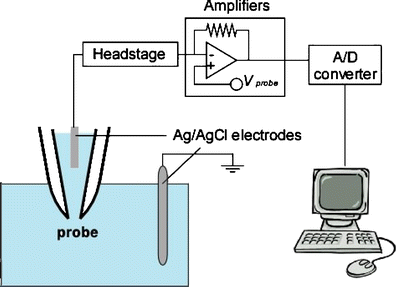
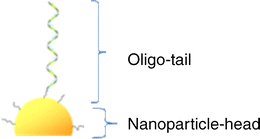
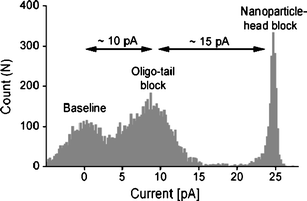
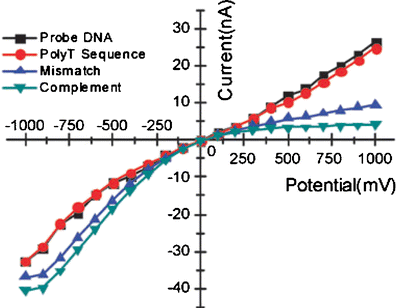
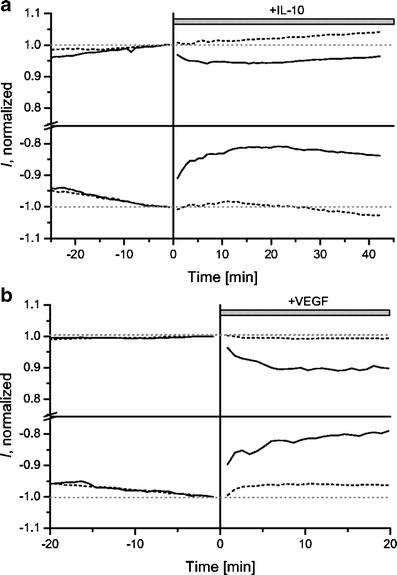
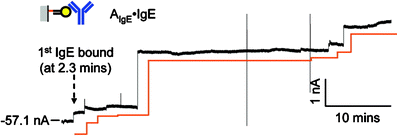
Similar articles
-
Label-free biosensing with functionalized nanopipette probes.Proc Natl Acad Sci U S A. 2009 Mar 24;106(12):4611-6. doi: 10.1073/pnas.0900306106. Epub 2009 Mar 5. Proc Natl Acad Sci U S A. 2009. PMID: 19264962 Free PMC article.
-
Nanopipettes as Monitoring Probes for the Single Living Cell: State of the Art and Future Directions in Molecular Biology.Cells. 2018 Jun 6;7(6):55. doi: 10.3390/cells7060055. Cells. 2018. PMID: 29882813 Free PMC article. Review.
-
Ultrasensitive mycotoxin detection by STING sensors.Biosens Bioelectron. 2010 Oct 15;26(2):333-7. doi: 10.1016/j.bios.2010.08.016. Epub 2010 Aug 19. Biosens Bioelectron. 2010. PMID: 20829024 Free PMC article.
-
Fabricating Reproducible, Reversible, and High Signal Change Aptasensors with Gold-Modified Nanopipettes.ACS Appl Mater Interfaces. 2025 Apr 30;17(17):24877-24886. doi: 10.1021/acsami.4c22935. Epub 2025 Apr 21. ACS Appl Mater Interfaces. 2025. PMID: 40257359
-
The Modification and Applications of Nanopipettes in Electrochemical Analysis.Chempluschem. 2023 Jul;88(7):e202300100. doi: 10.1002/cplu.202300100. Chempluschem. 2023. PMID: 37442793 Review.
Cited by
-
The New Era of High-Throughput Nanoelectrochemistry.Anal Chem. 2023 Jan 10;95(1):319-356. doi: 10.1021/acs.analchem.2c05105. Anal Chem. 2023. PMID: 36625121 Free PMC article. Review. No abstract available.
-
Carbohydrate-actuated nanofluidic diode: switchable current rectification in a nanopipette.Nanoscale. 2013 Oct 7;5(19):9214-21. doi: 10.1039/c3nr02105j. Epub 2013 Aug 12. Nanoscale. 2013. PMID: 23934399 Free PMC article.
-
Dynamic control of nanoprecipitation in a nanopipette.ACS Nano. 2011 Apr 26;5(4):3191-7. doi: 10.1021/nn200320b. Epub 2011 Mar 22. ACS Nano. 2011. PMID: 21413733 Free PMC article.
-
Voltage-controlled metal binding on polyelectrolyte-functionalized nanopores.Langmuir. 2011 May 17;27(10):6528-33. doi: 10.1021/la2005612. Epub 2011 Apr 21. Langmuir. 2011. PMID: 21510657 Free PMC article.
-
Resistive-Pulse Measurements with Nanopipettes: Detection of Vascular Endothelial Growth Factor C (VEGF-C) Using Antibody-Decorated Nanoparticles.Anal Chem. 2015 Jun 16;87(12):6403-10. doi: 10.1021/acs.analchem.5b01468. Epub 2015 Jun 4. Anal Chem. 2015. PMID: 26040997 Free PMC article.
References
-
- Ghica ME, Pauliukaite R, Fatibello-Filho O, Brett CMA. Application of functionalised carbon nanotubes immobilised into chitosan films in amperometric enzyme biosensors. Sens actuators B Chem. 2009;142:308–315. doi: 10.1016/j.snb.2009.08.012. - DOI
-
- Hahm JI, Lieber CM. Direct ultrasensitive electrical detection of DNA and DNA sequence variations using nanowire nanosensors. Nano Lett. 2003;4:51–54. doi: 10.1021/nl034853b. - DOI
Grants and funding
LinkOut - more resources
Full Text Sources
Other Literature Sources
